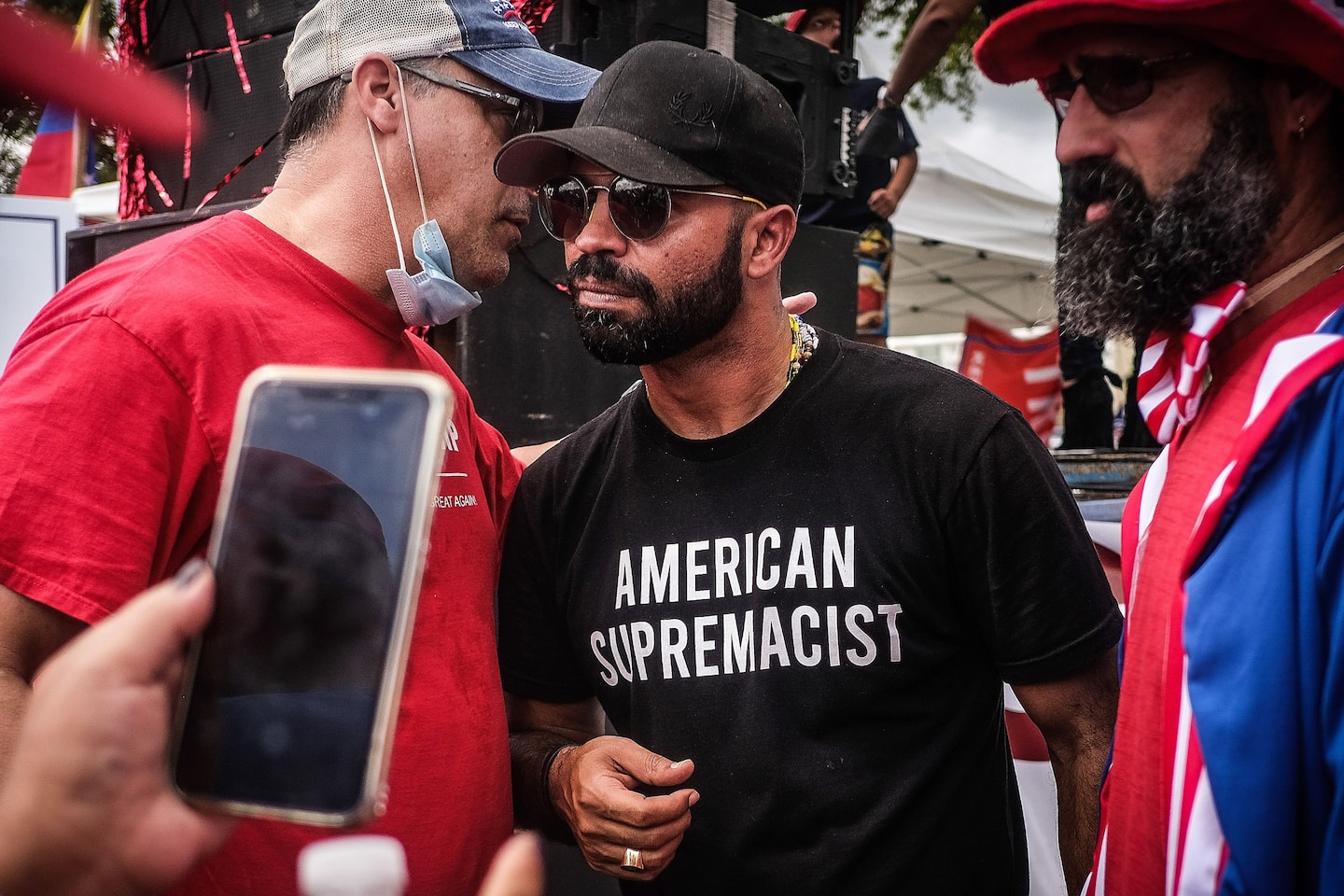To understand Trump’s support, we must think in terms of multiracial Whiteness

Such diversity highlights the fact that President Trump’s share of the Latino vote in November actually rose over 2016, notwithstanding years of incendiary rhetoric targeting Mexicans and other Latino communities. Yes, Trump’s voters — and his mob — are disproportionately White, but one of the more unsettling exit-poll data points of the 2020 election was that a quarter to a third of Latino voters voted to reelect Trump.
And while the vast majority of Latinos and an overwhelming majority of African American voters supported the Biden-Harris ticket and were crucial to its success, many Black and brown voters have family and friends who fervently backed the MAGA policy agenda, including its delusions and conspiracy theories.
One of the organizers of the “Stop the Steal” movement is Ali Alexander, a Trump supporter who identifies as Black and Arab. The chairman of the neo-fascist Proud Boys is Enrique Tarrio, a Latino raised in Miami’s Little Havana who identifies as Afro-Cuban; when he arrived in Washington for the Jan. 6 march, he was arrested for allegedly burning a Black Lives Matter banner taken from a Black church the month before.
What are we to make of Tarrio — and, more broadly, of Latino voters inspired by Trump? And what are we to make of unmistakably White mob violence that also includes non-White participants? I call this phenomenon multiracial whiteness — the promise that they, too, can lay claim to the politics of aggression, exclusion and domination.
Before Trump, conservatives seeking to appeal to Latinos typically embraced the politics of conservative multiculturalism. Politicians such as George W. Bush reached out to Latino voters by showing a familiarity with their language and history, emphasizing the values of diversity and inclusion. Depicting Latinos as a distinct and valuable part of America’s democratic mosaic, conservative multiculturalism connected Latino culture to Republican values, emphasizing conservative approaches to faith, patriotism and the traditional family.
Trump, by contrast, knows nothing of the history of Latinos in the United States and rarely even pretends to find value in Latinos’ distinct identities. Rather than offering his non-White voters recognition, Trump has offered them multiracial whiteness.
Rooted in America’s ugly history of white supremacy, indigenous dispossession and anti-blackness, multiracial whiteness is an ideology invested in the unequal distribution of land, wealth, power and privilege — a form of hierarchy in which the standing of one section of the population is premised on the debasement of others. Multiracial whiteness reflects an understanding of whiteness as a political color and not simply a racial identity — a discriminatory worldview in which feelings of freedom and belonging are produced through the persecution and dehumanization of others.
Multiracial whiteness promises Latino Trump supporters freedom from the politics of diversity and recognition. For voters who see the very act of acknowledging one’s racial identity as itself racist, the politics of multiracial whiteness reinforces their desired approach to colorblind individualism. In the politics of multiracial whiteness, anyone can join the MAGA movement and engage in the wild freedom of unbridled rage and conspiracy theories.
Multiracial whiteness offers citizens of every background the freedom to call Muslims terrorists, demand that undocumented immigrants be rounded up and deported, deride BLM as a movement of thugs and criminals, and accuse Democrats of being blood-drinking pedophiles.
Here, the politics of exclusion, violence and demonization are available to all. If you want to speak Spanish and celebrate a quinceañera in your family, go ahead. If you want to be a Proud Boy, be a Proud Boy. Trump doesn’t care. As long as you love him, he’ll love you.
America’s racial divide is not simply between Whites and non-Whites. Thinking in terms of multiracial whiteness helps us recognize that much of today’s political rift is a division between those who are drawn to and remain invested in a politics of whiteness and those who seek something better.
We witnessed this very divide in Georgia, when a significant segment of White voters broke with Georgia’s White majority, joining a multiracial coalition that sent Raphael Warnock and Jon Ossoff to the U.S. Senate, following the leadership of Black women whose organizing made that electoral victory possible.
This is the hopeful side of the shifting and diverging politics of whiteness. In the post-Trump era, the challenge will be to prevail over the extremism of Trump’s White majority while trying to prevent the politics of whiteness from becoming an increasingly multiracial affair.
Read more:






